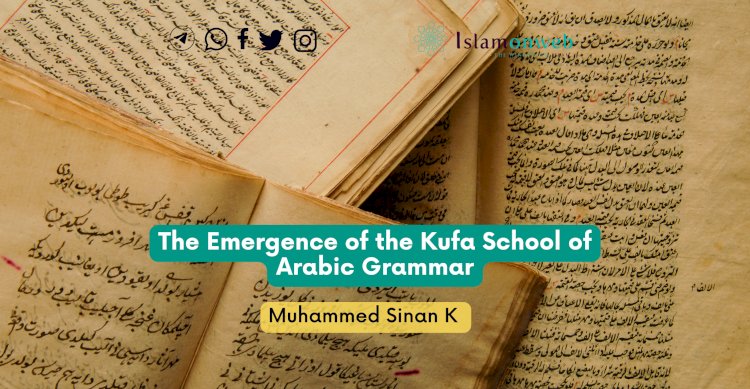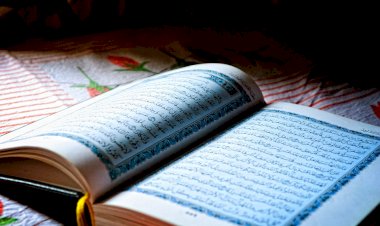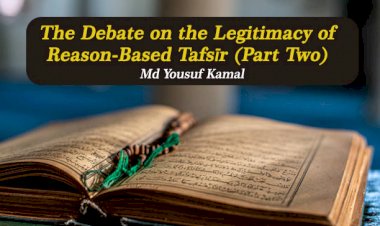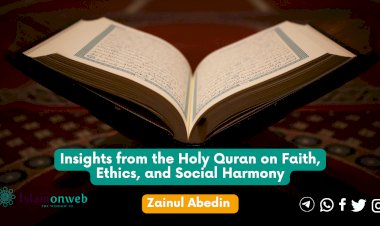The Emergence of the Kufa School of Arabic Grammar
The Arabic language holds immense significance in Islam as it is the language of the Quran, the holy book of Islam. The Quran, revealed to the Prophet Muhammad, is written in Classical Arabic, and its verses are the literal words of God. Though Arabic language is crucial for a deeper comprehension of Islamic teachings and for engaging in acts of worship, such as prayer and recitation of the Quran, it is a sacred and central language for Muslims around the world. As a result, many Muslims strive to learn Arabic to establish a stronger connection with their faith.
Over the years, Arabic has diversified and evolved, branching into various dialects and forms across the Arab world. Furthermore, Arabic's significance has transcended cultural and linguistic boundaries. Non-Arab Muslims and people from different backgrounds have recognized the importance of Arabic in understanding and practicing Islam. Many non-Arabs have enthusiastically taken up the challenge of learning Arabic, driven by their desire to recite the Quran in its original language, communicate effectively with Arabic-speaking communities, and gain a deeper understanding of Islamic culture and history. This intercultural exchange through the Arabic language has not only strengthened the global Muslim community but also fostered a sense of unity among believers from different regions and backgrounds.
Allah protected the Arabic language by safeguarding the Holy Quran, as mentioned in Surah Yusuf: "We have sent it down as an Arabic Qur'an, in order that ye may learn wisdom." It is this divine connection that underscores the importance of studying and teaching Arabic language, literature, and grammar. To protect the Holy Quran from misunderstandings, various "madrasas" schools were established, with the Basra school of Arabic grammar followed by the Kufa school of Arabic grammar. Arabic grammar serves as the bedrock of the Arabic language, offering the rules and guidelines for constructing and interpreting sentences. This foundational knowledge is crucial to grasp the nuances and intricacies of the Quran's language, including its literary devices and rhetorical figures. As the primary source of Islamic law and guidance, the Holy Quran requires a deep understanding for Muslims to correctly practice their religion. Arabic grammar, in this context, is indispensable for comprehending the Quranic text and applying its teachings to everyday life.
Kufa: Centre for Knowledge and Trade
During the second and third centuries, Kufa held a pivotal position as a bustling trade hub, serving as a vital connection point for caravans from various corners of the world and facilitating trade between numerous towns. Besides its prominence in trade, Kufa also boasted a significant status in the realm of knowledge. Notably, Kufa focused extensively on the study and recitation of the Quran, producing three of the esteemed "seven reciters" (Qurra al-Sab'a). Within the domains of knowledge and commerce, Basra and Kufa undeniably reigned as two prominent centers. However, it was Basra that took the initial steps in establishing a school dedicated to Arabic grammar, contributing to the enhancement of the Arabic language.
Moreover, Kufa stood as a major hub of Islamic scholarship in the early centuries of Islam. In addition to being the hometown of the three renowned Quranic reciters, it nurtured numerous other influential Islamic scholars. Figures like the jurist Imam Abu Hanifa and the theologian al-Washsha hailed from Kufa, further emphasizing the city's intellectual significance. Kufa also played a pivotal role in the development of Shia Islam. It notably witnessed the Battle of the Camel, a momentous event in the early history of Shia Islam. Moreover, Kufa served as the residence for many distinguished Shia scholars, including Imam Ja'far al-Śadiq. Beyond scholarship, Kufa flourished as a prominent center for poetry and literature during the early Islamic period, contributing to the rich culture of the era.
Establishment of Kufa School of Arabic Grammar
The origins of the Kufa school of Arabic grammar trace back to the efforts of early scholars in the city. Abu Ja'far al-Rauasi, regarded as one of the pioneers, embarked on the study and teaching of Arabic grammar in Kufa. Following his lead, Ma'az al-Hara'i continued to build on the foundations laid by Abu Ja'far. However, the true founders of the Kufa school, Al-Kisa'i and Fara', are recognized for their distinct contributions. These two scholars, both students of Abu Ja'far al-Rauasi, approached the study of grammar in a novel manner, effectively shaping its principles and establishing a new school that propagated their rules and insights.
While Abu Ja'far al-Rauasi made significant contributions, authoring a notable work called 'al Faisal' in the field of Arabic grammar, he isn't typically named as the school's founder. This distinction is due to his somewhat limited engagement in major debates and controversies within the realm of Arabic grammar, especially when compared to the influential grammar generated by the Basra school of Arabic grammar. Furthermore, Ma'az al-Hara'i is credited by some grammarians as the founder of 'ṣarf' (the study of Arabic morphology), although the true pioneer of 'ṣarf' is generally acknowledged as Imam Sibawaih.
The Kufa school of Arabic grammar came into its own during the era of Al-Kisa'i and Fara', marking an official establishment of this grammatical tradition. These scholars played a pivotal role in delineating the landscape of Arabic grammar, setting its foundations and principles. It's noteworthy that Kufa, while known for its emphasis on Quranic recitations and Islamic jurisprudence, entered the realm of Arabic grammar later than the Basra school. The Basra school had already left a significant mark in the field by the time Kufa ventured into the domain of grammar.
The emergence of the Kufa school of Arabic grammar occurred in the second century AH (eighth century CE), following the precedents set by the Basra school. While influenced by the Basra tradition, the Kufa school also carved out its unique approach to Arabic grammar. This school notably stressed the role of analogy in Arabic grammar and introduced novel grammatical theories, including the concept of the "weak verb." The Kufa school boasted a roster of renowned grammarians who made indelible contributions to Islamic history, with figures like al-Kisa'i and Fara' leaving an enduring legacy in the field.
Among the major reasons which led to the establishment of the school of Arabic grammar are:
- The large number of Arabs who migrated to Kufa from different Arab tribes led to the diversification of Arabic dialects in Kufa and made it difficult for non-Arabs to understand the Quran.
- Interest in Islamic jurisprudence led to the study of the Arabic language to understand the Quran and jurisprudence.
- The existence of a number of grammarians who wrote books and published them among the people.
It's important to recognize that the Kufa school of Arabic grammar shares the fundamental principles of grammar with the Basra school. However, what sets it apart is its unique perspective and approach, allowing it to establish itself as a distinct grammatical tradition. The Kufa school's reliance on these foundational principles served as an impetus, enabling the development of a new and innovative grammatical school.
The impact of the Kufa school on the Arabic language's evolution cannot be understated. Its grammarians introduced groundbreaking theories that continue to be relevant and applied in contemporary times. One of the most enduring contributions is the division of verbs into two categories: strong verbs, which adhere to regular conjugation patterns, and weak verbs, which exhibit irregular conjugation patterns. This classification system remains in use today. Additionally, the Kufa school introduced a novel theory of noun declension, categorizing nouns into three groups: sound nouns (following regular declension patterns), defective nouns (with missing consonants), and broken plurals (exhibiting irregular plural forms). Furthermore, their pioneering theories on syntax and morphology are still instrumental in the analysis of Arabic sentence structure and meaning, underscoring the enduring significance of the Kufa school's contributions to the Arabic language.
References
Al-Alali, Abdul Aziz. (2023). Madrasat al-kūfah. Dar al-Madar al-Islami.
Shawki, Muhammad Abdur Rahman. (2003) Madāris al-naḥwiyyah Cairo: Dar al-Ma'arif.
Al-Khudeiri, Abdul Rahman bin Abdullah. (2021). Al-farq bayn al-baṣriyyīn wa-l-kūfiyyīn Dar Ibn Hazm.
About the author
Muhammed Sinan K is a research scholar pursuing a degree in Arabic Language and Literature at Darul Huda Islamic University.
Disclaimer
The views expressed in this article are the author’s own and do not necessarily mirror Islamonweb’s editorial stance.
























Leave A Comment